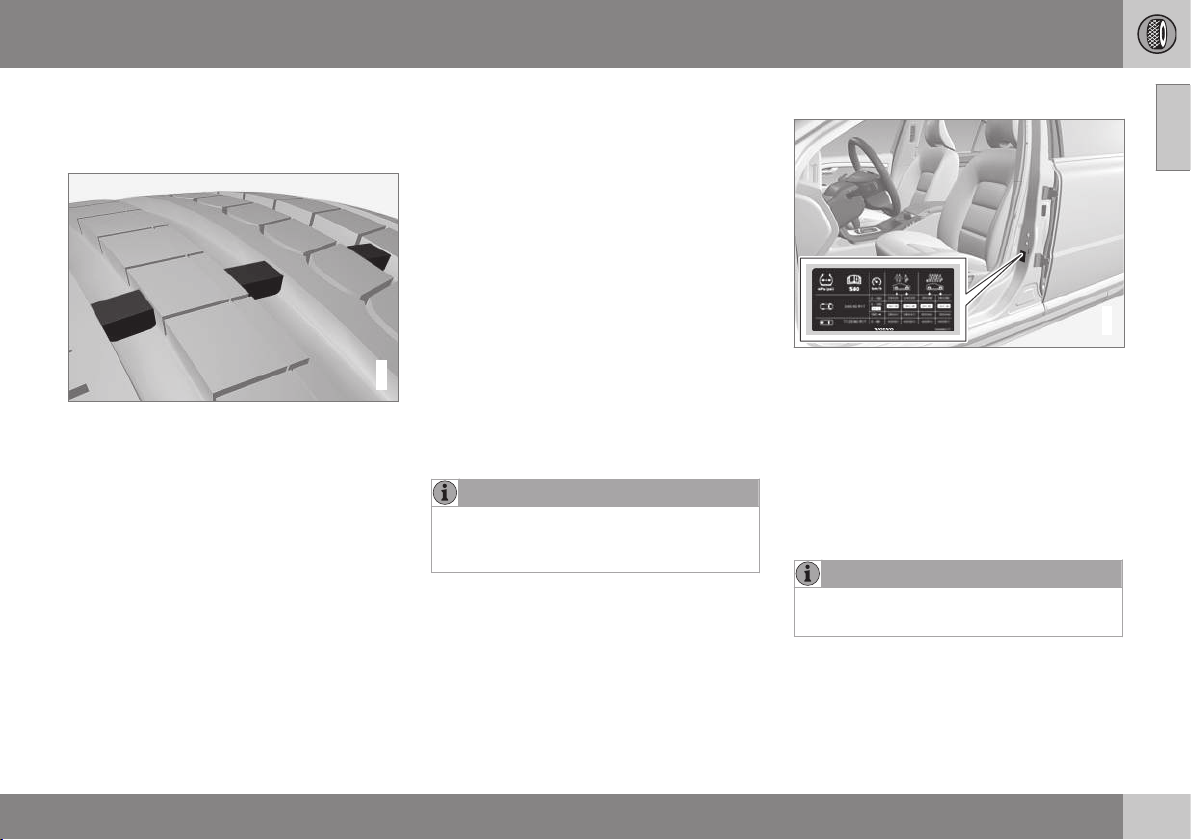Loading ...
Loading ...
Loading ...

09 Wheels and tyres
09
}}
313
Tyres - tread wear indicators
A tread wear indicator shows the status of the
tyre's tread.
G021829
Tread wear indicators.
Tread wear indicators are narrow treadless
bands across the width of the tread. On the
side of the tyre are the letters TWI (Tread
Wear Indicator). When the tyre's tread depth
is down to 1.6 mm, the tread depth will be
level in height with the tread wear indicators.
Change to new tyres as soon as possible.
Remember that tyres with little tread depth
provide very poor grip in rain and snow.
Related information
•
Tyres - speed ratings (p. 315)
•
Tyres - air pressure (p. 313)
•
Tyres - direction of rotation (p. 312)
Tyres - air pressure
Tyres can have different air pressures which
are measured in bar.
Check the air pressure in the tyres
The air pressure for the tyres should be
checked every month and should be checked
on cold tyres. "Cold tyres" means the tyres
are the same temperature as the ambient
temperature. After several few kilometres of
driving, the tyres warm up and the pressure
increases. Inadequate tyre pressure increases
fuel consumption, shortens tyre lifespan and
impairs the car's roadholding. Driving on
tyres with tyre pressure that is too low could
result in the tyres overheating and being
damaged. Tyre pressure affects travelling
comfort, road noise and steering characteris-
tics.
NOTE
Tyre pressure decreases over time, this is
a natural phenomenon. Tyre pressure also
varies depending on ambient temperature.
Tyre pressure label
G021830
The tyre pressure label on the driver's side
door pillar (between frame and rear door)
shows which pressure the tyres should have
at different loads and speed conditions. This
is also specified in the tyre pressure table.
Tyre pressure for the car's recommended tyre
dimension and information about ECO pres-
sure that results in improved fuel economy
can be found in the printed owner's manual.
NOTE
Temperature differences change the
tyre pressure.
Fuel economy, ECO pressure
In order to obtain optimum fuel economy at
speeds below 160 km/h an ECO pressure is
recommended (applies to both full and light
Loading ...
Loading ...
Loading ...